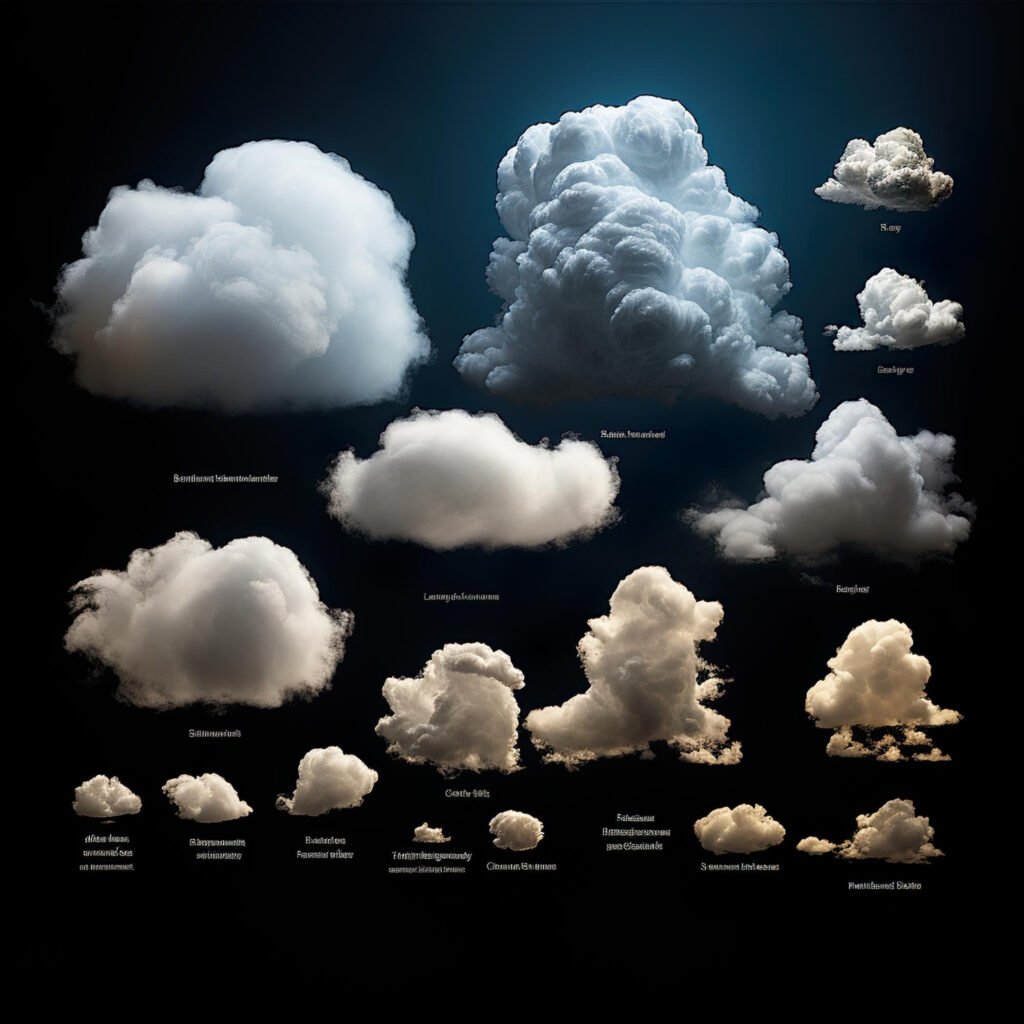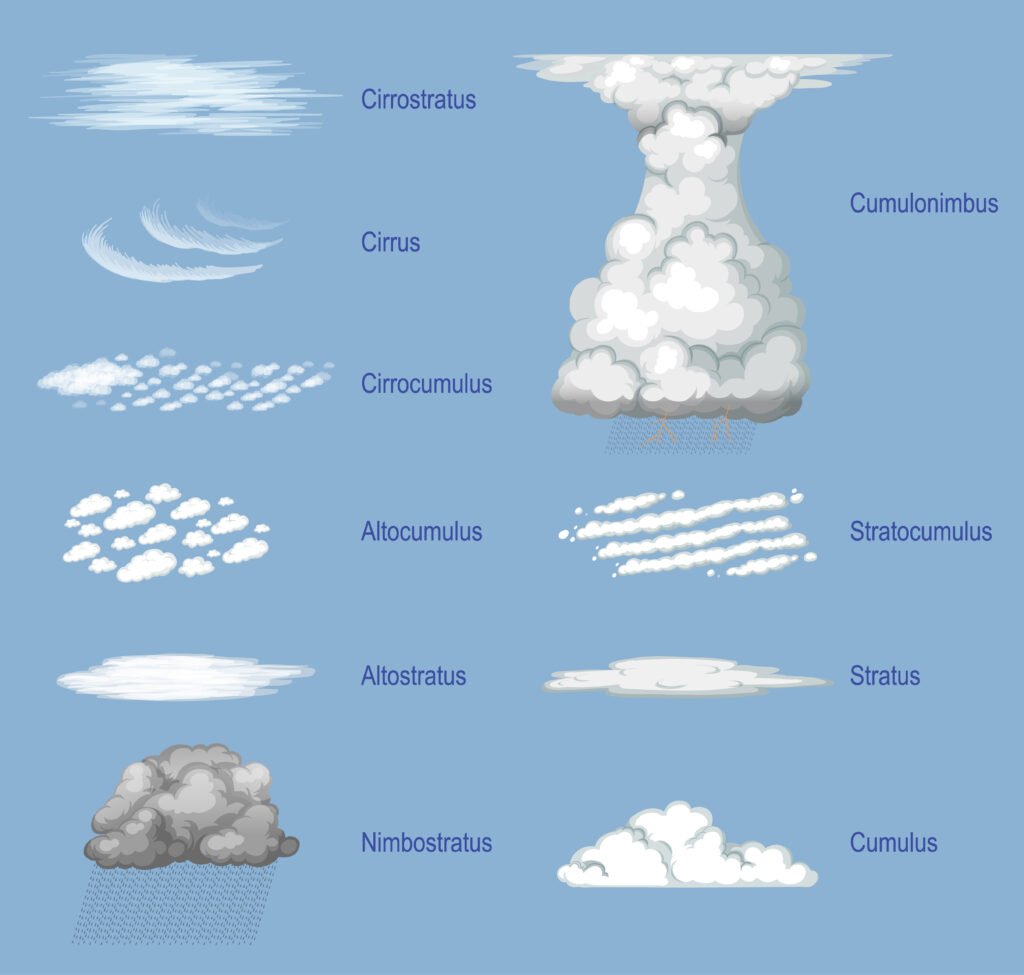Imagine you are on vacation and enjoying a warm sunbath on a beach. You look at the skies and see different-shaped clouds wandering through them. You start wondering how these clouds formed.
Well today let’s find the answer to this intriguing question. Clouds are made of tiny water droplets which are so light that they can rise high. But how do they rise high, and what causes it to do so?
There are two important steps in the formation of clouds: Evaporation and condensation of water.
Imagine a sunny day. The ground gets heated by the sun, and this warmth makes the air close to the ground heat up. As hot air is less dense than the cold air, it rises up.
As this warm air rises higher into the atmosphere, it starts to cool down. Think of it like climbing a mountain where it gets colder as you go up. When warm air cools down, the water vapour in it starts to come together, forming tiny water droplets.
Warm air can hold more water droplets than cold air. Hence, when air becomes cooler, it can’t hold these droplets of water. This is called saturation. It is during this stage that the water droplets start sticking to the tiny particles in the atmosphere (like dust or smoke). These particles are called condensation nuclei.
A large number of tiny particles gather together around the condensation nuclei and grow larger, becoming visible to us as ‘Clouds’!
Clouds color

White
The tiny water droplets or ice crystals that form the cloud scatter the sunlight in all directions. This scattering of light happens because the water droplets are much larger than the wavelengths of visible light. The different colours of light (red, orange, yellow, green, blue, indigo, and violet) have different wavelengths. When light encounters particles that are much larger than its wavelength (like water droplets), it scatters in all directions equally, making the cloud appear white to our eyes.
Grey
Clouds appear grey when they become thicker and denser, blocking more sunlight from passing through them.
This typically happens for a few reasons:
Increased Water Content: When a cloud has a higher concentration of water droplets or ice crystals, it can appear grey. This often occurs before precipitation, as the cloud gathers more moisture.
Thicker Clouds: Thicker clouds with more layers can block more sunlight, resulting in a greyer appearance. These clouds often signal overcast or rainy weather.
Absorbing Sunlight: Some clouds, particularly those composed of larger water droplets or ice crystals, can absorb more sunlight, making them appear darker and greyer.
Yellow and orange
Similar to red and pink clouds, yellow and orange clouds occur during sunrise or sunset. These colours are created by the scattering of shorter wavelengths and the dominance of longer wavelengths.
Green
While rare, green clouds can occur under specific conditions. This is most commonly associated with severe thunderstorms, where the combination of sunlight filtering through the storm and the presence of hail or large water droplets in the cloud can create a greenish tint.
Types of clouds

High Altitude clouds: Found at an altitude of (16,500-45,000 feet)
- Cirrus Clouds (Ci): These are high-altitude clouds found at about 20,000 feet (6,000 meters) or higher. They are wispy, thin and composed of ice crystals. They often indicate fair weather but can signal a change in weather if they thicken and lower.
- Cirrostratus Clouds (Cs): These are thin, high-altitude clouds that often cover the sky in a milky veil. They can create halos around the sun or moon and usually precede a change in weather.
- Cirrocumulus Clouds (Cc): These are small, white patches of clouds found at very high altitudes. They are composed of ice crystals and often appear in rows.
Mid-Level Clouds ( 6,500 – 23000feet)
- Nimbostratus Clouds (Ns): These are thick, dark, and featureless clouds that cover the entire sky. They are also low-level clouds and often bring steady, continuous rain or snow.
- Altostratus Clouds (As): These are grey or blue-grey clouds that form at middle altitudes. They often cover the entire sky and can bring overcast conditions with light precipitation.
- Altocumulus Clouds (Ac): These are white or grey clouds that appear in patches or layers at middle altitudes. They often signal a change in weather and can bring light precipitation.
Low-level clouds (less than 6500 feet)
- Cumulus Clouds (Cu): These are the fluffy, white clouds with a flat base that you often see on a sunny day. They form at low to middle altitudes and usually indicate fair weather.
- Stratus Clouds (St): These are uniform, greyish clouds that cover the sky like a blanket. They are typically low-level clouds and often bring overcast conditions and light precipitation.
- Cumulonimbus Clouds (Cb): These are massive clouds that can extend through all altitude levels, from low to high. They are known for their towering height and can bring severe weather, including thunderstorms, heavy rain, and sometimes even tornadoes.
Clouds on other planets

Venus
Venus has a thick, toxic atmosphere primarily composed of carbon dioxide with clouds made of sulfuric acid. These clouds completely obscure the planet’s surface from view in visible light.
Mars
Clouds on Mars are primarily composed of water ice crystals, and occasionally, they can be made of frozen carbon dioxide (dry ice).
Jupiter
Jupiter is a gas giant with a very thick atmosphere, mostly composed of hydrogen and helium. Its clouds are made of ammonia crystals, ammonium hydrosulfide, and water.
Saturn
Saturn’s clouds are mostly made of ammonia crystals and water ice.
Uranus and Neptune
These ice giants have atmospheres mainly composed of hydrogen, helium, and methane. The clouds are composed of water, ammonia, and methane, which give them distinct colouration. Uranus has a bluish tint due to methane, while Neptune has a deeper blue colouration.
Titan (moon of Saturn)
Clouds on Titan are composed of methane and ethane, and they form at high altitudes in the atmosphere.
For further exploration of educational content and insights, delve into the resources available on Chrysalis High.
FAQ
What is the basic process behind the formation of clouds?
Explore the fundamental steps involved in cloud formation, from the role of water vapor to the conditions necessary for clouds to develop.
Are there different types of clouds, and do they form differently?
Learn about the various cloud types and the unique atmospheric conditions that contribute to their distinct formations and characteristics.
How does temperature and humidity impact cloud formation?
Understand the intricate relationship between temperature, humidity levels, and the formation of clouds, unraveling the science behind these atmospheric phenomena.
What role do aerosols and atmospheric particles play in cloud formation?
Delve into the influence of aerosols and particles in the atmosphere, exploring their impact on cloud nucleation and the overall process of cloud formation.


